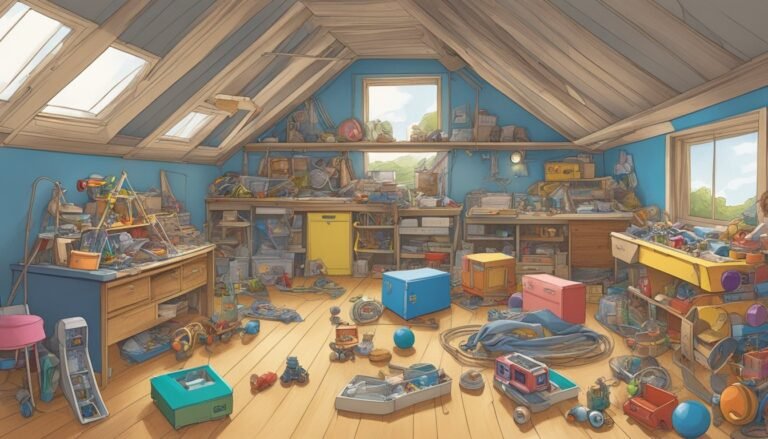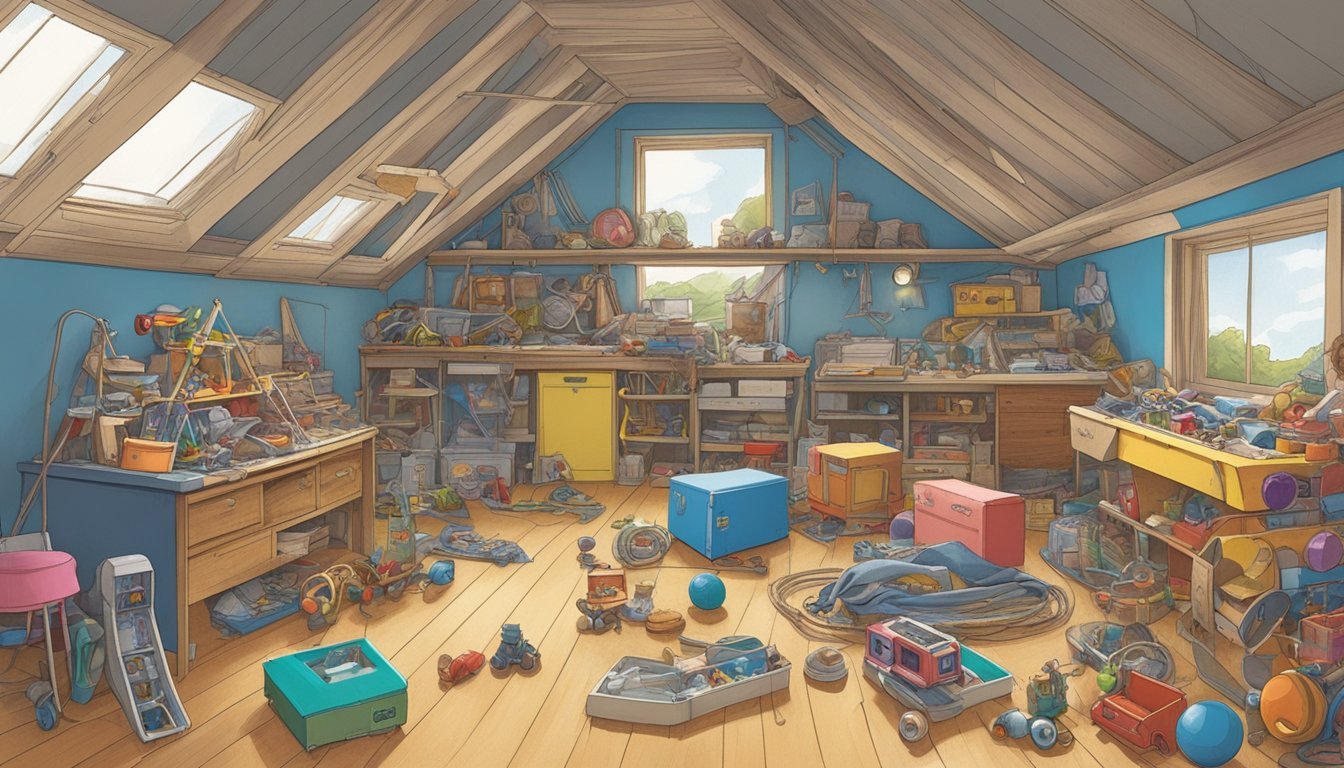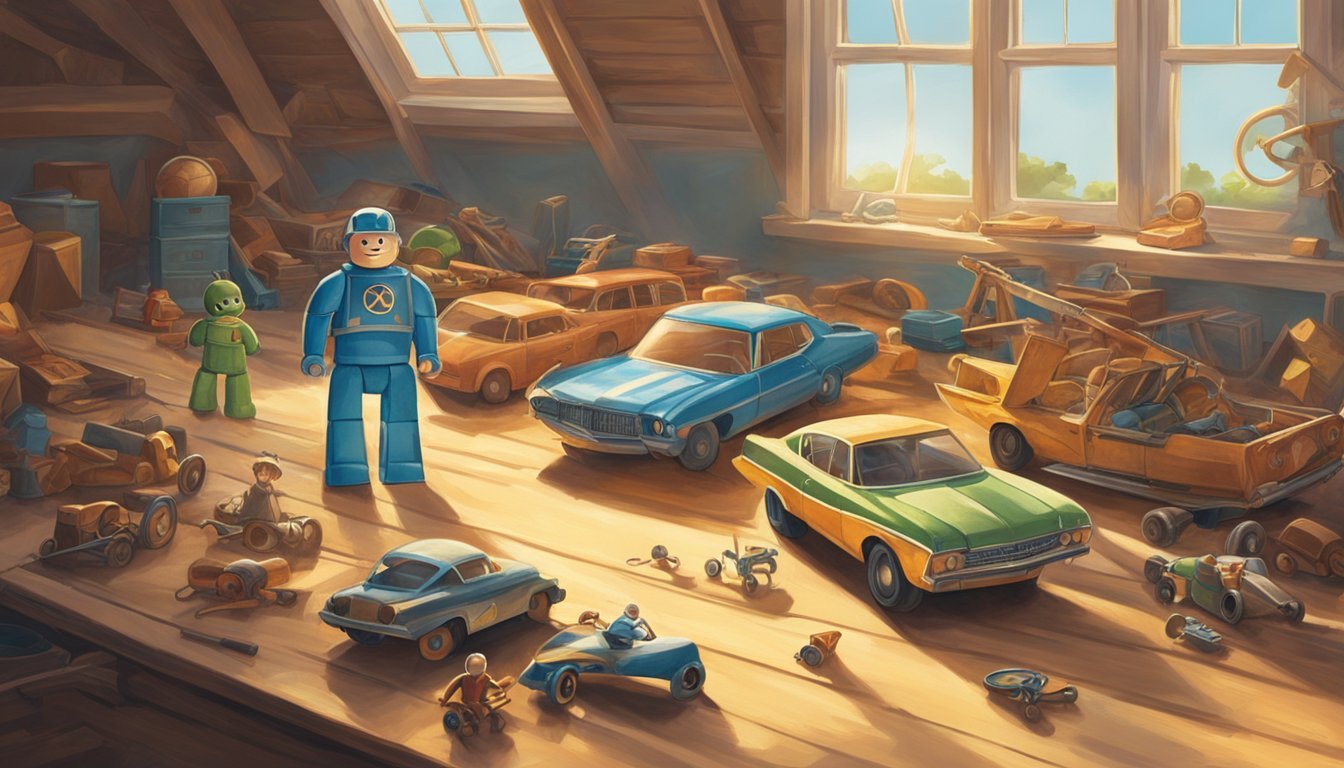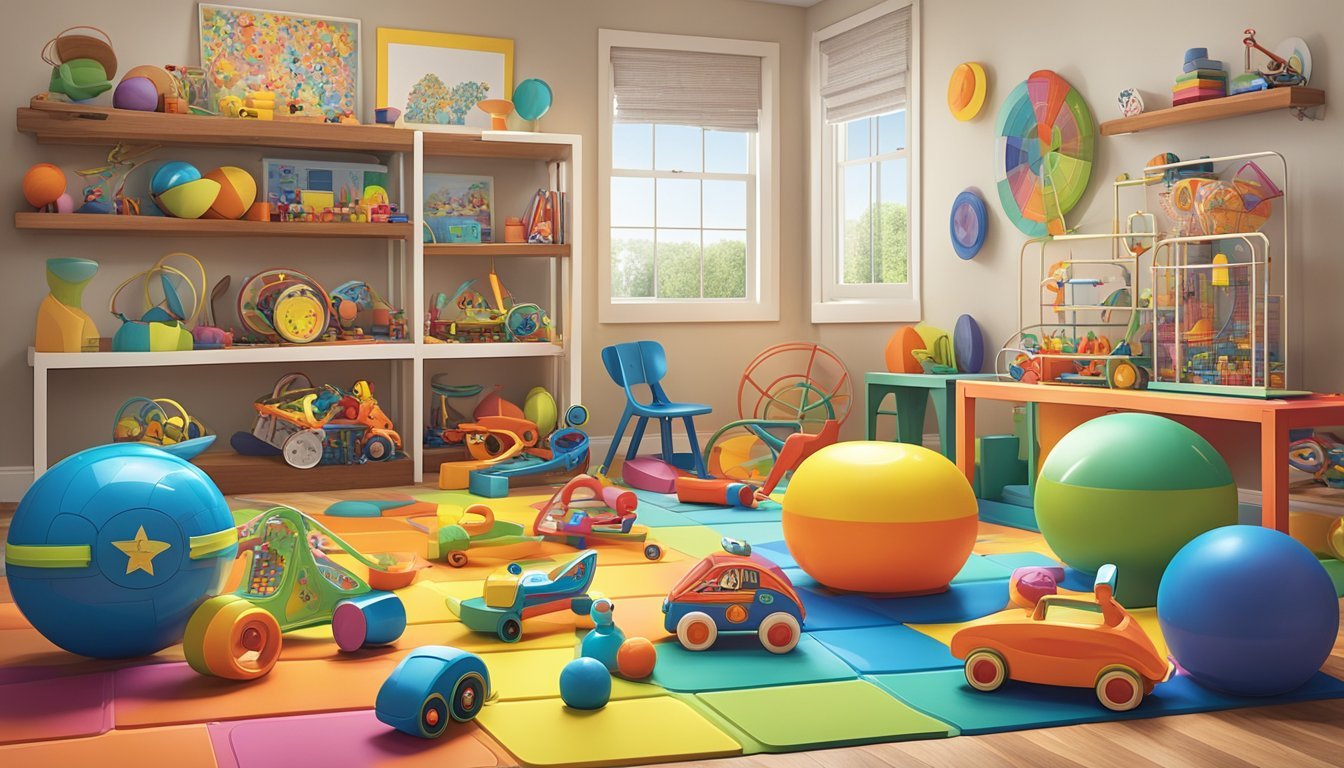8 Forgotten Toys of the 70s That We Wish Would Make a Comeback: Nostalgic Gems We Miss

Toys from the 1970s hold a special place in your heart, don’t they? Those were the days of simple pleasures and endless imagination.
You remember spending hours with toys that sparked creativity and adventure in a way today’s gadgets just can’t match.

Some of these forgotten toys still bring a smile to your face and make you wish they could make a comeback. Whether they offered endless fun indoors or adventurous play outside, these toys were more than just pastimes—they were a part of who you were as a kid.
Dive into the list and take a nostalgic trip back to the ’70s.
1) Big Wheel
If you were a kid in the ’70s, you probably remember the Big Wheel.
This low-riding tricycle with a big front wheel was a hit among kids.
It was easy to ride and had bright colors that caught everyone’s eye.
Parents loved it because it was light and easy to carry.
Unlike metal trikes, the Big Wheel was made of plastic, making it a safer option.
You could ride it on the sidewalk, in the driveway, or around the park without a problem.
One of the coolest features was the hand brake.
You could pull the brake and spin out, making sharp turns that felt like mini-drift sessions.
This made everyday rides feel like little adventures.
The Big Wheel wasn’t just a toy; it was a rite of passage.
It gave you your first taste of freedom on wheels.
Riding one made you feel like the coolest kid on the block.
So, it’s easy to see why the Big Wheel holds a special place in so many hearts.
2) Lite-Brite
Remember those glowing masterpieces you created with Lite-Brite as a kid? Lite-Brite, released by Hasbro in 1967, became super popular in the 70s.
It was a simple concept: a backlit grid where you poked in colored pegs to make pictures.
The fun part was watching your creations light up.
You had those colorful pegs and black paper sheets as your canvas.
It didn’t matter if your picture was a strange mix of colors—it always looked cool when it shined.
Lite-Brite came with design templates, but you could also freestyle your own designs.
It sparked creativity and provided hours of entertainment without screens or batteries.
Many of these sets from the 70s are now valuable collectibles.
If you still have one tucked away, it could be worth quite a bit.
And yes, even the incomplete sets can fetch some good money.
This toy might seem primitive now, but back then, it was pure magic.
Kids loved it, and many adults remember it fondly.
No wonder there’s a nostalgic desire to see Lite-Brite make a comeback!
3) Weebles
Weebles were egg-shaped toys that you could never knock over.
They would always pop back upright.
These little characters came in many forms, from people to animals.
Originally launched by Hasbro in 1971, Weebles had clever, weighted bottoms.
This made them fun for endless play.
They could wobble around, but they wouldn’t fall down.
You might remember playing with Weebles in different playsets.
There were treehouses, haunted houses, and even circuses.
Each set added a new layer of adventure to your playtime.
Weebles had a simple, yet captivating design.
Their bright colors and sturdy build made them stand out.
Even kids today would enjoy their timeless charm.
If you played with Weebles, you likely have fond memories.
They were a big hit, and it’s easy to see why.
You could spend hours making them wobble and creating stories with them.
4) View-Master
Remember the View-Master? It was like a little magic window to different worlds.
You’d pop in a circular reel and look through the binoculars to see cool 3D images.
It felt like a mini-adventure right in your hands.
The reels had all kinds of scenes.
You could explore famous landmarks, watch snippets from your favorite shows, or dive into nature scenes.
It was like having a portable slideshow that didn’t require any electricity.
Kids loved collecting new reels to add to their collection.
Each reel told a different story or showcased a new place.
It was educational too, sneaking in a bit of learning while you were having fun.
The View-Master wasn’t just a toy; it was an experience.
Before smartphones and tablets, this was your window to the world.
The quality of the images and the 3D effect made everything come alive in a unique way.
While it might seem simple by today’s standards, the nostalgia and charm of the View-Master make it a toy worth remembering.
It engaged your imagination, which is something timeless.
5) Spirograph
Do you remember Spirograph? This toy let you create awesome, intricate designs with just some plastic gears and a pen.
It was a hit in the ’70s and still brings back fond memories for many.
Spirograph was invented by a mechanical engineer in 1965.
Kids loved it because it was easy to use and the results were always cool.
You just needed to fit the plastic gears together and start drawing.
The patterns you could make were endless.
You could spend hours making different designs, each more beautiful than the last.
It was like a mini art studio in a box.
Nowadays, you don’t see Spirograph around as much.
But it’s a toy that many wish would make a comeback.
It helped kids develop fine motor skills and let their creativity run wild.
If you ever had a Spirograph set, you probably remember the joy of seeing your designs come to life.
It was simple, fun, and a brilliant way to pass the time.
6) Simon
Do you remember Simon? This electronic memory game was first released in the late ’70s and quickly became a hit.
Simon was a round device with four big, colorful buttons that lit up and played sounds in a sequence.
Your goal was to remember the sequence and repeat it back by pressing the buttons in the same order.
It sounds simple, but Simon could be surprisingly challenging as the sequences got longer and faster.
Playing Simon was a fun way to test your memory and reflexes.
Plus, the catchy sounds and bright lights made it feel like a mini dance party in your hands.
Whether you played it solo or with friends, Simon was a blast.
If you got really good, you could impress everyone with your superhuman memory skills.
You can still find versions of Simon today, but many kids today might not know about this classic.
It’d be fun to see a new generation take on the Simon challenge and see if they’ve got what it takes to beat the game.
7) Stretch Armstrong

Stretch Armstrong was a truly unique toy from the 1970s.
Kids loved how you could stretch his arms and legs up to four feet.
Made by Kenner, this rubbery action figure had a blond hairstyle and wore just a black speedo.
The toy was filled with a special gel made from corn syrup.
This allowed it to be stretched and twisted into all sorts of crazy positions.
You and your friends probably spent hours seeing how far you could pull Stretch without breaking him.
Besides Stretch Armstrong, there were also some cool villains like Stretch Monster and Stretch Serpent.
These stretchy rivals added more fun to your playtime.
If you were a ’70s kid, you might remember wishing for Stretch Armstrong on your Christmas list.
Even today, Stretch Armstrong’s simple yet clever design stands out.
It’s a toy that mixed creativity and durability, giving kids endless fun.
8) Speak & Spell
You might remember the Speak & Spell if you were a kid in the late ’70s.
This electronic toy was more than just fun—it was also a learning tool.
Introduced in 1978 by Texas Instruments, it helped you learn to spell and pronounce words.
The toy became a pop culture icon when it appeared in the movie E.T. the Extra-Terrestrial.
E.T. used it to “phone home,” making this toy even more memorable.
Speak & Spell had a unique design with a bright orange color and a sturdy handle.
Its keyboard and digital display were easy for kids to use, making learning fun.
You typed a word, and the toy would speak it back to you.
This was groundbreaking at the time, combining learning with interactive play.
Parents liked it because it was educational, and you loved it because it was cool and different.
The Speak & Spell showed that toys could be both entertaining and teach you something valuable.
Why Nostalgia for Toys is So Strong
Toys from the 70s hold a unique place in our hearts due to the deep emotional connections and the cultural impact they had during that time.
Emotional Connections
You often feel strong emotions when you think about the toys from your childhood.
These toys were more than just objects; they were companions in your adventures.
For many, toys like Spirographs or Clackers bring back memories of simpler times playing on shag carpets and imagining fantastic worlds.
Every time you see one of these toys, it can trigger memories of your friends, family, and the fun moments spent with them.
The bond you had with these toys was mostly about the joy and excitement they brought into your life.
You probably remember birthdays and holidays when you received a new toy, making it a cherished part of your personal history.
Cultural Impact of 70s Toys
The toys from the 70s weren’t just popular; they also reflected the cultural trends of the time.
They often featured bright colors, unique designs, and innovative concepts that were new and exciting.
For example, Pet Rocks and Mood Rings captured the quirky and experimental spirit of the 70s.
Besides being fun to play with, these toys were often seen in TV shows, movies, and advertisements, making them big parts of everyday life.
Because of this wide exposure, they became icons of the era, influencing fashion, slang, and even attitudes.
Many toys from that decade are now considered classics, and their designs and stories are still remembered today.
This broad cultural footprint has only strengthened the nostalgia, making those toys memorable.
By reconnecting with these influential toys, you don’t just remember the items but also revisit the times and feelings associated with them.
The Role of Toys in Child Development

Toys are more than just a source of fun for kids.
They play a big role in shaping different aspects of a child’s growth, helping develop creativity, social skills, and physical abilities.
Creativity and Imagination
Playing with toys helps kids think creatively.
When they use building blocks or action figures, they create stories and build worlds.
This kind of imaginative play gets their brains working.
Crafting toys like Spirographs from the 70s allowed kids to explore amazing designs, helping them think outside the box.
Art sets and Play-Doh also encourage children to create their own masterpieces.
These activities help develop problem-solving skills and original thinking.
Role-playing toys, such as dollhouses, let children step into different roles.
They can become anyone they want to be, from a chef to an astronaut, sparking endless possibilities in their minds.
Social Skills and Interaction
Toys also teach kids how to get along with others.
When children play together, they learn to share, take turns, and communicate effectively.
Playing board games or with interactive toys, kids practice these important social skills.
Retro toys like Talking Phones from the 70s gave kids a chance to engage in pretend conversations.
This helps improve their language skills and understanding of social cues.
Toys that can be played in groups, like electric race car sets, foster teamwork and cooperation.
Role-playing games also encourage negotiation and empathy.
Kids learn to understand different perspectives and work together towards common goals during playtime.
Physical Activity
Physical play is important for a child’s health.
Toys that promote movement help build strength, coordination, and motor skills.
From riding tricycles to playing with jump ropes, active play keeps children fit and energetic.
In the 70s, outdoor toys like skateboards and pogo sticks were popular.
These toys got kids moving and gave them a chance to practice balance and agility.
Indoor toys like shape puzzles develop fine motor skills, aiding hand-eye coordination.
Even simple actions, like fitting pieces into a puzzle, can boost physical and cognitive development.
Encouraging active play with toys helps form healthy habits that can last a lifetime.
The Evolution of Toys Over the Decades
Toys have seen incredible changes over time due to technology, consumer tastes, and economic issues.
Let’s look at how these factors have shaped the way kids play.
Technological Advancements
In the 1970s, many toys were simple and relied on imagination.
You might remember playing with toys like Lite-Brite or Speak & Spell.
These used basic electronics to offer hours of fun.
By the 1980s and 1990s, video game consoles like the Atari and Nintendo revolutionized play by introducing digital gaming.
This era also saw the rise of action figures that talked or moved.
Newer toys today use advanced tech like AI and VR.
Think of smart robots or augmented reality games.
They create more interactive and personalized experiences.
Changing Consumer Preferences
In the past, toys were usually gender-specific.
Boys played with cars and action figures, while girls had dolls and kitchen sets.
Over time, this has changed.
Now, many toys are designed to be gender-neutral, appealing to all kids regardless of gender.
You see more focus on STEAM (Science, Technology, Engineering, Art, and Mathematics) toys, which aim to educate while entertaining.
Parents and kids today also look for toys that can be enjoyed for longer periods.
The trend is shifting towards quality over quantity, with a preference for durable and timeless toys.
Economic and Environmental Considerations
Economic factors have always influenced toy manufacturing.
In past decades, toys were often made from natural materials like wood or metal.
When plastic became cheaper, it took over.
But with growing awareness about sustainability, there’s a move back to eco-friendly materials.
You see toys made from recycled or biodegradable substances now.
Economic downturns also affect toy trends.
During tough times, affordable, multipurpose toys become popular.
Companies are also more inclined to produce toys that last longer and have educational value to attract conscientious parents.
These factors show how toys have evolved based on societal changes and advancements.
It’s interesting to see how toys not only adapt to but also influence the way children grow and learn.

